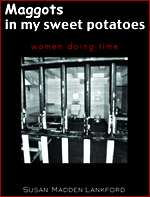Although lesbian, gay, bisexual, and transgender (LGBT) youth comprise 5 percent to 7 percent

English: Rainbow flag flapping in the wind with blue skies and the sun. (Photo credit: Wikipedia)
of overall young people, an overwhelming 40 percent of all homeless youth are LGBT. Family rejection is the leading cause of homelessness among them, but an additional 26 percent leave home because they feel they have nowhere else to turn, because their schools and peers are hostile to LGBT students. Moreover, discrimination and harassment in schools exacerbate family conflicts over a youth’s sexual orientation or gender identity and increase the chance of homelessness.
Senators Tom Harkin and Al Franken are now pushing an education bill that includes a number of reforms to the Student Nondiscrimination Act (SNDA), which are designed to reduce incidents of bullying in schools. Modeled after Title IX of the Education Amendments of 1972, SNDA would establish the right to an education free of harassment on the basis of sexual orientation and gender identity in primary and secondary schools. If signed into law, the bill would allow students who have been bullied to seek legal recourse, and it would authorize the federal government to withhold federal funds from schools that condone the bullying of LGBT students. It would be an important first step to ending LGBT youth homelessness.
Earlier this year, Senators Casey and Kirk introduced a bill in the Senate (which Rep. Linda Sanchez introduced in the House), the Safe Schools Improvement Act (SSIA), which would require schools receiving federal funding to implement policies to ban bullying, including on the basis of sexual orientation and gender identity. It would also require states to report bullying and harassment data to the U.S. Department of Education.
Importantly, SSIA also explicitly states that schools cannot allow the threat of bullying and harassment to deter students from participating in school programs and extracurricular activities. In-school and afterschool programs have the potential to prevent homelessness for LGBT youth by providing a positive environment and deterring them from turning to substance abuse and engaging in other risky behaviors to cope with peer rejection. Discouraging youth from engaging in these behaviors alone reduces the risk that these youth will become homeless at some point in their lives.
Research from the Family Acceptance Project found that:
Abstaining from risky behaviors and performing well at school can reduce family conflict at home, which is the primary reason that LGBT youth experience homelessness. Among LGBT students, 30 percent report missing at least one day of school in the past month because of safety concerns, and students who are bullied frequently report lower grade-point averages..
“Researchers have also found that LGBT youth are more likely than other youth to use tobacco products than their heterosexual peers, largely to cope with rejection from their families and peers. By adopting and enforcing antibullying policies, schools can help alleviate behaviors associated with family conflict and rejection such as substance abuse and poor academic performance, thereby decreasing the odds of a child becoming homeless.
Another way Congress could help LGBT homeless youth is by directing existing homeless-youth programs to specifically target them. The Runaway and Homeless Youth Act (RHYA) awards grants to public and private organizations assisting homeless youth. It is reauthorized every five years, yet makes no mention of LGBT youth, despite their disproportionate representation among the homeless-youth population. This year, Congress should include them in RHYA.
Congress should adopt a general statement of nondiscrimination for the bill that includes sexual orientation and gender identity. This would prohibit grant recipients using RHYA funds from discriminating against gay and transgender youth, who are frequently mistreated or turned away when they seek help from these organizations, simply because they identify as LGBT.
The Runaway and Homeless Youth Act is up for reauthorization this year, and the House and Senate are expected to introduce their respective funding bills for fiscal year 2014 in the coming weeks.
In addition to battling bullying in schools and improving existing programs for homeless youth, Congress should also seek new solutions to end LGBT youth homelessness. The bulk of the Reconnecting Youth to Prevent Homelessness Act aims to improve training, educational opportunities and permanency planning for older foster-care youth and reduce homelessness of all young people, LGBT or not. One part of the bill in particular calls on the secretary of health and human services to establish a demonstration project that develops programs that improve family relationships and reduce homelessness specifically for LGBT youth. A growing body of research from the Family Acceptance Project suggests that this family-centered approach is one of the best ways to support LGBT homeless youth, so targeted support for these programs has the potential to significantly decrease rates of homelessness.
The Reconnecting Youth to Prevent Homelessness Act was introduced in an earlier session of Congress by then-Sen. John Kerry, but has not yet been reintroduced into the 113th Congress.
For the first time, researchers have established a clear link between accepting family attitudes and behaviors towards their LGBT children and significantly decreased risk and better overall health in adulthood. The study shows that specific parental and caregiver behaviors—such as advocating for their children when they are mistreated because of their LGBT identity or supporting their gender expression—protect against depression, substance abuse, suicidal thoughts and suicide attempts in early adulthood. In addition, LGBT youth with highly accepting families have significantly higher levels of self-esteem and social support in young adulthood. No prior research had examined the relationship between family acceptance of LGBT adolescents and health and mental health concerns in emerging adulthood.
Caitlin Ryan, PhD, Director of the Family Acceptance Project at San Francisco State University. states:
At a time when the media and families are becoming acutely aware of the risk that many LGBT youth experience, our findings that family acceptance protects against suicidal thoughts and behaviors, depression and substance abuse offer a gateway to hope for LGBT youth and families that struggle with how to balance deeply held religious and personal values with love for their LGBT children.
The study, published in the Journal of Child and Adolescent Psychiatric Nursing, also learned that LGBT young adults who reported low levels of family acceptance during adolescence were over three times more likely to have suicidal thoughts and to report suicide attempts, compared to those with high levels of family acceptance. It also found that high religious involvement in families was strongly associated with low acceptance of LGBT children.
Related articles


































 Over half of Detroit’s homeless are at risk of dying on the streets from freezing cold or violence—a far greater percentage than in any other US city. Interviews conducted via
Over half of Detroit’s homeless are at risk of dying on the streets from freezing cold or violence—a far greater percentage than in any other US city. Interviews conducted via 










